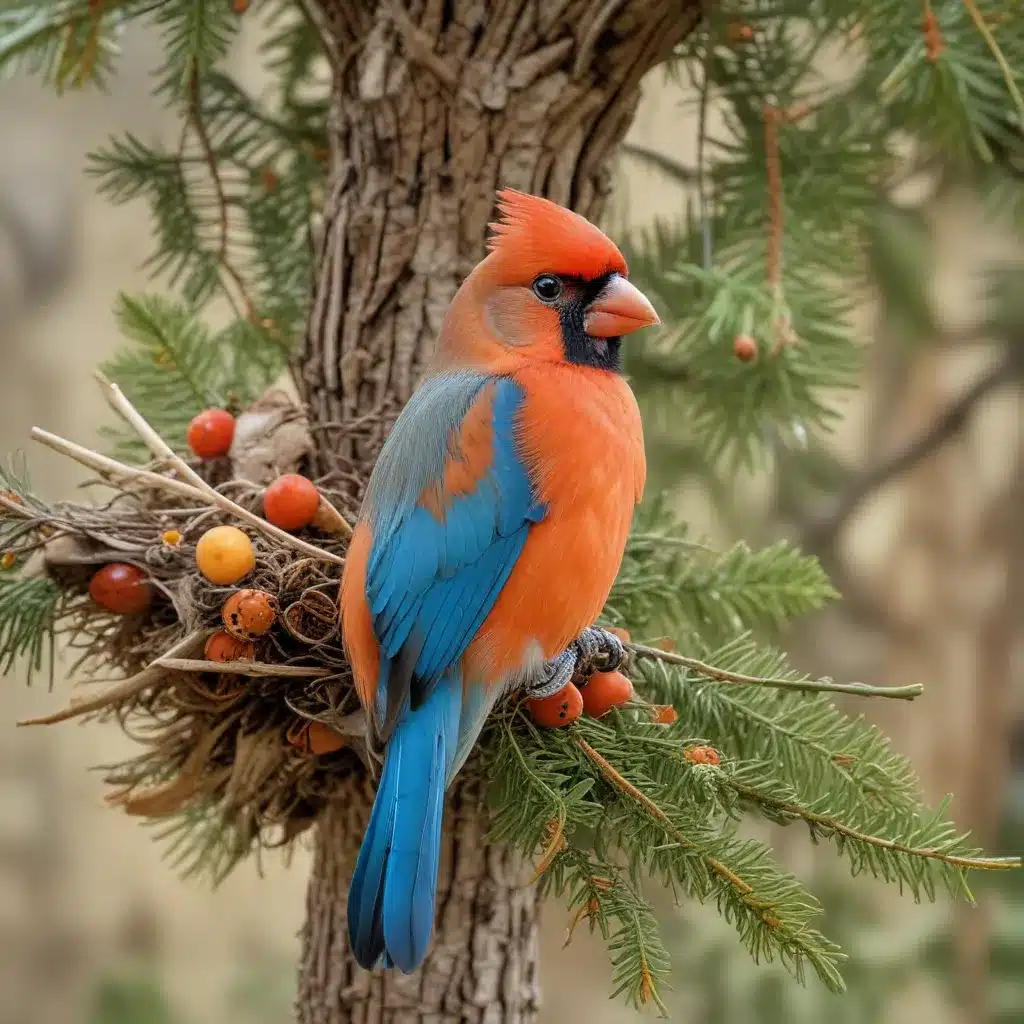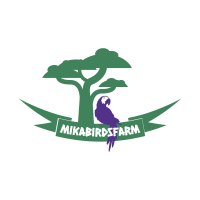
Backyard Bird Nutrition
As an experienced avian caretaker, I’ve seen firsthand how the nutritional needs of our feathered friends can vary greatly throughout the seasons. Understanding these seasonal dietary shifts is key to supporting the health and well-being of the birds that visit our backyards.
Seasonal Dietary Needs
Just like us, birds have differing energy requirements depending on the time of year. During the harsh winter months, they need to consume more calories to maintain their body heat and survive the cold. Come springtime, their nutritional focus shifts to fueling the demands of migration, mating, and raising young. And in the lush summer and bountiful fall, birds can afford to be a bit more discerning in their food choices.
The specific nutritional preferences of backyard birds also fluctuate with the seasons. In early spring, for example, many insect-eating species will seek out high-protein foods to support egg production and nestling growth. As summer transitions to autumn, fruit-bearing shrubs and seed-rich plants become increasingly important as birds prepare for their long journeys south.
Foraging Habits
Observing the natural foraging habits of your backyard birds can provide valuable insights into their nutritional needs. Seed-eating birds like finches and sparrows will eagerly visit feeders stocked with sunflower seeds, millet, and nyjer. Meanwhile, insect-eaters like chickadees and warblers may focus their attention on tree bark, leaf litter, and flowering plants in search of caterpillars, spiders, and other protein-rich prey.
Interestingly, even birds with similar diets may employ different foraging strategies depending on the time of year. During the breeding season, a male house finch might aggressively defend a patch of nyjer seed, while in winter, the same individual would happily join a mixed flock of finches, sparrows, and juncos at your backyard feeders.
Backyard Bird-Friendly Plants
One of the best ways to support the seasonal nutritional needs of your backyard birds is by incorporating a diverse selection of native plants into your landscape. These natural food sources not only provide sustenance but also offer vital shelter and nesting sites.
Native Plant Selection
When choosing plants for your bird-friendly garden, look for those that produce berries, seeds, nectar, or attract insects – the primary food sources for most backyard species. Native shrubs like serviceberry, dogwood, and winterberry are excellent choices, as they offer a bounty of nutritious fruits that birds relish. Planting nectar-rich flowers like bee balm, cardinal flower, and native hibiscus can also attract hummingbirds and butterflies, which in turn provide a protein-packed meal for insect-eating birds.
Planting for Shelter
In addition to food, birds also require adequate shelter for nesting, roosting, and evading predators. Incorporating evergreen trees and dense, multi-layered shrubs into your backyard design can create the perfect year-round refuge for your feathered visitors. Species like eastern red cedar, American holly, and bayberry not only provide essential cover but also offer nesting sites and winter berries.
Supplementary Bird Feeding
While cultivating a bird-friendly landscape is an excellent long-term strategy, many backyard enthusiasts also choose to supplement their avian guests’ diets with strategically placed feeders. This can be especially helpful during periods of scarcity or when natural food sources are scarce.
Types of Bird Feeders
The type of bird feeder you choose can significantly impact the species that visit your yard. Seed feeders, for example, are a magnet for finches, sparrows, and other seed-eaters, while suet feeders tend to attract insect-loving birds like woodpeckers, nuthatches, and chickadees. Hummingbird feeders, of course, are a must-have for attracting these diminutive yet voracious nectar-sippers.
Nutritious Bird Feed
Filling your feeders with high-quality, nutrient-dense foods can make all the difference in supporting the health and vitality of your backyard birds. Look for seed mixes that include a variety of grains, nuts, and fruits to cater to the diverse dietary preferences of your avian visitors. Supplementing with specialized foods like nyjer seed, safflower, and suet can also provide essential fats, proteins, and carbohydrates.
Seasonal Feeding Considerations
Adjusting your bird feeding routine to match the natural rhythms of the seasons is crucial for ensuring your feathered friends have access to the resources they need throughout the year.
Winter Feeding Strategies
As the days grow shorter and temperatures plummet, maintaining a reliable food source becomes a matter of life and death for many backyard birds. Ensure your feeders remain well-stocked, especially during periods of inclement weather, and consider offering high-energy foods like suet or nut-based mixes to help birds maintain their body weight. Providing adequate shelter in the form of dense evergreen shrubs or roosting boxes is also essential for protecting birds from the cold.
Transitional Feeding
The arrival of spring and autumn can present unique challenges for backyard birds as they prepare for migration or the breeding season. During these transitional periods, it’s important to be mindful of the changing nutritional needs of your avian visitors. In early spring, for example, offering protein-rich foods like mealworms or suet can help fuel the energy-intensive demands of nesting and egg-laying. Conversely, as birds depart for their winter homes in the fall, providing nutrient-dense seeds and fruits can help them build the necessary fat reserves for their long journeys.
By understanding the seasonal dietary requirements and foraging habits of your backyard birds, you can create a thriving, bird-friendly oasis that supports their health and well-being throughout the year. Whether through strategic plant selection, thoughtful feeder placement, or adjusting your feeding routine, your efforts will be rewarded with the vibrant sights and sounds of a flourishing avian community. For more tips and resources, be sure to visit Mika Birds Farm – your one-stop-shop for all things avian!


